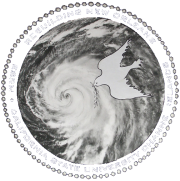“This course is about lending our hands and backs to our brothers, sisters, and fellow creatures of the Gulf Coast. We are here to help, make friends, ask ‘why?’, and most importantly to ask ‘why not?’ This is Service Learning in the truest sense.”
– Dr. Sean Anderson, creator of ESRM 492
OVERVIEW
Each Spring for the past decade, students from CSU Channel Islands’ ESRM 492: Service Learning in New Orleans course travel from southern California to southern Louisiana for the intense, two week centerpiece field experience of their semester. While in Louisiana participants divide their days between restoring wetlands south of the City of New Orleans and installing food gardens in Orleans and Plaquemines Parishes. Most evenings are devoted to visits with a wide variety of friends and experts: chefs, reporters, politicians, artists, activists, museum curators, business leaders, entrepreneurs, and a host of amazing musicians. In addition to materially helping the region to recover, we examine the environmental, social, and policy drivers that led to the man-made disasters that we know as Hurricane Katrina and the Deepwater Horizon Oil Spill.
COURSE HISTORY
ESRM 492 was born in the immediate wake of Hurricane Katrina’s August 29, 2005 landfall in Louisiana. The frustration felt by Dr. Sean Anderson and his students throughout the fall of 2005 culminated in a 2006 exploratory trip that solidified the decision to bring students to the Gulf Coast as part of a formal educational experience. From the outset, we have focused on both the natural and human-dominated landscapes of Louisiana. Our early trips focused on demolishing damaged home and businesses while simultaneously surveying the hurricane-induced spread of three non-native woody species in the once-healthy cypress (Taxodium distichum) swamps that acted as a storm buffer south of the City of New Orleans. As the years progressed, our ecological management efforts expanded and matured. We soon began actively herbiciding our woody invasive species, designing restoration experiments, and assessing the efficacy of our invasive control in support of Woodlands Conservancy’s long-term efforts to protect and manage our coastal wetlands. We have in effect become the survey department or pro bono consulting firm for this wonderful 501(c)(3) organization dedicated to protecting, managing, and boosting the passive recreational opportunities within these coastal wetlands.
Just as we have become increasingly sophisticated in our ecological management efforts, so too have we deepened our work in the built environment. By 2009 most homeowners and small businesses had run out of fiscal reserves and rebuilding damaged structures slowed to a crawl. This reality combined with some sober reflection upon where are true strengths lay led us to change our focus in urban areas. Since 2010, we have de-emphasized the physical rebuilding of structures and turned towards installing community food gardens in impoverished neighborhoods. We now split most trip days more or less evenly between garden installations and wetland restoration work.
Extensive relationships across southern Louisiana and our own academic expertise in the ecotoxicology of oil spills honed along the California Coast since late 1980s put us in a unique position to help in the aftermath of the April 20, 2010 blowout of the Macondo Well and the ensuing Deepwater Horizon disaster. We created and led the only non-federal and non-industry overview team to provide an independent ecological overview of the holistic impacts of the Gulf Oil Spill. While our students have rarely directly assessed field impacts of deposited oil, the social, economic, and management impacts of the Deepwater Horizon Spill have become a major focus of our trips from Spring 2011 onward.
MULTIPLE PARTNERS
While the core of this Service Learning experience is CSU Channel Islands, we have been blessed with a wide range of academic partners, collaborators, and participants over the years. First and foremost is Dr. John Lambrinos of Oregon State University (OSU), a fundamental part of every course and trip to Louisiana since 2008. Many OSU undergraduates, graduate students, and faculty have joined us over the years. In recent years Dr. Tom Huggins, Director of the UCLA Herbarium has also become a key partner greatly expanding our regional botanical expertise.
Other academic partners include:
- Oregon State University
- University of California Los Angeles
- Loyola Marymount University
- University of California San Diego
- Tulane University
Key NGO partners include:
- Woodlands Conservancy (formerly Woodlands Trail and Park)
- Louisiana State University Extension
- Santa Monica Bay Restoration Foundation
- Barataria-Terrebonne National Estuary Program
- New Orleans Food and Farm Network
- Grow Dat Youth Farm
- Sunshine Ministries
- Hollygrove Market and Farm
- Mustardseed Ministries
COURSE TIMELINE
ESRM 492 begins with a competitive fall application process wherein we typically see three students applying for every open class slot. Students are selected to participate in late November.
Our Spring Semester begins with a series of lectures and background material, building to our annual trip in March. We have been generously supported every year by the CSU Channel Islands Instructionally Related Activities (IRA) Committee. IRA funding allows us to offer the trip with students paying only one-third of the full trip cost. One requirement of this funding is that our trip must take place on or near our university’s Spring Break, hence we head to Louisiana in early March some years, late March in others.
Upon returning to home, our semester culminates with our (in)famous Poster, Video, and Gumbo session wherein we share our experiences, insights, and culinary abilities with our wider campus community. This celebration of the peoples and places of the Gulf Coast routinely draws 100 to 150 attendees.

CSUCI students looking at eroding cypress swamp from the LA23 Freeway in Venice, Louisiana on March 20, 2008.

